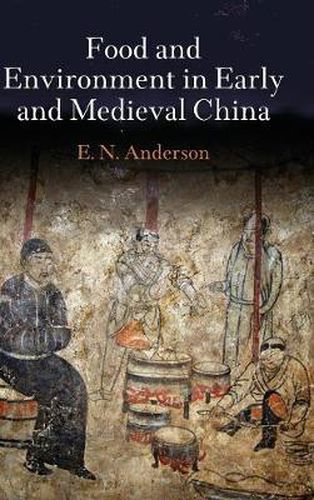Readings Newsletter
Become a Readings Member to make your shopping experience even easier.
Sign in or sign up for free!
You’re not far away from qualifying for FREE standard shipping within Australia
You’ve qualified for FREE standard shipping within Australia
The cart is loading…






This title is printed to order. This book may have been self-published. If so, we cannot guarantee the quality of the content. In the main most books will have gone through the editing process however some may not. We therefore suggest that you be aware of this before ordering this book. If in doubt check either the author or publisher’s details as we are unable to accept any returns unless they are faulty. Please contact us if you have any questions.
Chinese food is one of the most recognizable and widely consumed cuisines in the world. Almost no town on earth is without a Chinese restaurant of some kind, and Chinese canned, frozen, and preserved foods are available in shops from Nairobi to Quito. But the particulars of Chinese cuisine vary widely from place to place as its major ingredients and techniques have been adapted to local agriculture and taste profiles. To trace the roots of Chinese foodways, one must look back to traditional food systems before the early days of globalization.
Food and Environment in Early and Medieval China traces the development of the food systems that coincided with China’s emergence as an empire. Before extensive trade and cultural exchange with Europe was established, Chinese farmers and agriculturalists developed systems that used resources in sustainable and efficient ways, permitting intensive and productive techniques to survive over millennia. Fields, gardens, semiwild lands, managed forests, and specialized agricultural landscapes all became part of an integrated network that produced maximum nutrients with minimal input-though not without some environmental cost. E. N. Anderson examines premodern China’s vast, active network of trade and contact, such as the routes from Central Asia to Eurasia and the slow introduction of Western foods and medicines under the Mongol Empire. Bringing together a number of new findings from archaeology, history, and field studies of environmental management, Food and Environment in Early and Medieval China provides an updated picture of language relationships, cultural innovations, and intercultural exchanges.
$9.00 standard shipping within Australia
FREE standard shipping within Australia for orders over $100.00
Express & International shipping calculated at checkout
This title is printed to order. This book may have been self-published. If so, we cannot guarantee the quality of the content. In the main most books will have gone through the editing process however some may not. We therefore suggest that you be aware of this before ordering this book. If in doubt check either the author or publisher’s details as we are unable to accept any returns unless they are faulty. Please contact us if you have any questions.
Chinese food is one of the most recognizable and widely consumed cuisines in the world. Almost no town on earth is without a Chinese restaurant of some kind, and Chinese canned, frozen, and preserved foods are available in shops from Nairobi to Quito. But the particulars of Chinese cuisine vary widely from place to place as its major ingredients and techniques have been adapted to local agriculture and taste profiles. To trace the roots of Chinese foodways, one must look back to traditional food systems before the early days of globalization.
Food and Environment in Early and Medieval China traces the development of the food systems that coincided with China’s emergence as an empire. Before extensive trade and cultural exchange with Europe was established, Chinese farmers and agriculturalists developed systems that used resources in sustainable and efficient ways, permitting intensive and productive techniques to survive over millennia. Fields, gardens, semiwild lands, managed forests, and specialized agricultural landscapes all became part of an integrated network that produced maximum nutrients with minimal input-though not without some environmental cost. E. N. Anderson examines premodern China’s vast, active network of trade and contact, such as the routes from Central Asia to Eurasia and the slow introduction of Western foods and medicines under the Mongol Empire. Bringing together a number of new findings from archaeology, history, and field studies of environmental management, Food and Environment in Early and Medieval China provides an updated picture of language relationships, cultural innovations, and intercultural exchanges.